
"Qingteng Xuege is far from ordinary, and Laogou has unique talents in his old age. I wish to be a running dog in the underworld, and turn the wheel under the three masters." This poem written in the 1920s by the modern art master Qi Baishi (1864-1957) expresses his infinite admiration for the three predecessors Xu Wei, Bada Shanren and Wu Changshuo.
The Paper learned that the exhibition "Three Masters' Successors - Qi Baishi, Xu Wei, Bada Shanren and Wu Changshuo" was opened to the public at the Beijing Painting Academy Art Museum on September 9, showcasing the long-standing heritage of Chinese art and its endless creative vitality.
According to the Beijing Painting Academy, this exhibition, which has been prepared for a long time, is jointly sponsored by the Beijing Painting Academy, Bada Shanren Memorial Hall, and Xiling Seal Society, and has been jointly organized by more than ten domestic heavyweight cultural and museum institutions such as the National Museum of China, the National Art Museum of China, the Nanjing Museum, the Liaoning Provincial Museum, and the Tianjin Museum. It took several years to prepare, with Qi Baishi's tribute to the three masters and his teacher-student relationship as the axis, and exhibited more than 70 sets of works by Xu Wei, Bada Shanren, Wu Changshuo, and Qi Baishi, with the themes of "Hundred Generations of Glory", "Ping Weng's Creation", "Fou Lu Iron Pen", and "Qing The exhibition features four units, namely, "Tengxuege" and "Tengxuege", exhibiting representative works such as Xu Wei's "Assorted Flowers" and "Bamboo, Rocks and Narcissus", Bada Shanren's "Pair of Magpies and Large Rock" and "Deer by Toon Tree", Wu Changshuo's "Deer after Bada Shanren" and "Colored Plum Blossoms", Qi Baishi's "Ink Peony" and "Red Plum Blossom", as well as precious works by Qi Baishi imitating Bada Shanren. These works together outline the complete context of Chinese freehand flower and bird painting, from Xu Wei's splashed ink, to Bada's conciseness, to Wu Changshuo's bronze and stone spirit, and finally to Qi Baishi's integration and unique style.

Qi Baishi (1864-1957)
Qi Baishi's artistic origins and lineage
The line "Green vines and snow-capped mountains are far from ordinary" clearly expresses Qi Baishi's admiration for predecessors like Xu Wei and Bada Shanren, reflecting his profound reverence for tradition and his commitment to learning. Qi Baishi's paintings were widely influenced, with a particular focus on Xu Wei, Bada Shanren, and Wu Changshuo, whom he emulated closely.
Qi Baishi's first encounter with the paintings of Xu Wei, a Ming Dynasty artist, occurred at the age of 37. He encountered Xu Wei's freehand brushwork at a friend's house and was deeply moved by its unrestrained brushwork. In his autobiography, "Old Man Baishi," he recalled, "It was truly bold and sweeping, the brushwork flying and the ink dancing. Seeing it, I felt both love and fear." This conflicting feeling of awe and yearning permeated Qi Baishi's entire process of accepting Xu Wei's art.
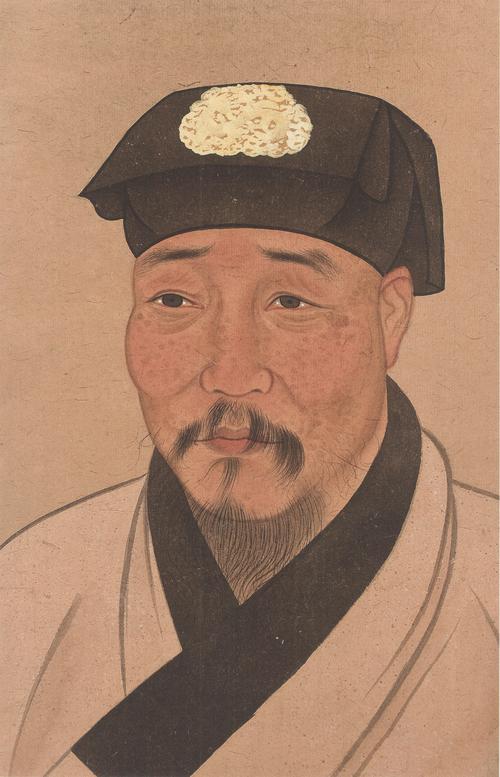
Portrait of Xu Wei
Bada Shanren's influence on Qi Baishi was even more specific and subtle. After fleeing the chaos in Beijing in 1917, Qi Baishi began to intensively study Bada Shanren's cool and elegant style. Qi Baishi particularly admired Bada Shanren's principle of "simplicity and simplicity" in composition, once saying, "The beauty of painting lies in the balance between similarity and dissimilarity. Too much similarity is pandering to the vulgar, while dissimilarity is deceiving the world. Bada Shanren understood this principle deeply." He inscribed a postscript to a 1919 painting of fish and birds: "Mr. Baishi has always admired Bada Shanren's works. Whenever I look at them, I feel as if I were confronting a deity." This reverence prompted Qi Baishi to deeply study Bada Shanren's freehand brushwork techniques in composition and brushwork.
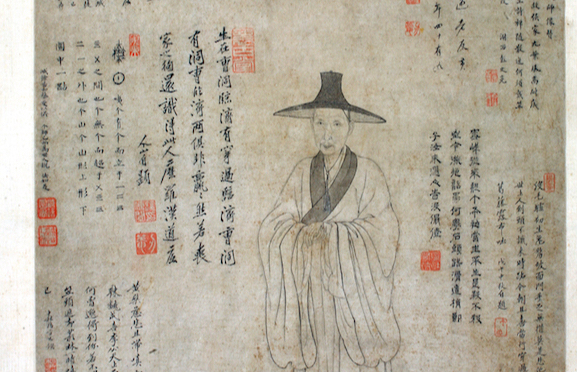
Detail of Bada Shanren's Portrait
As for Wu Changshuo, a contemporary and senior figure of Qi Baishi, the two never met, but they shared a profound artistic bond. In 1920, Qi Baishi encountered Wu Changshuo's paintings at the market and was amazed by their "spirit of metal and stone" and "power of brush and ink." From then on, he began studying Wu Changshuo's technique of incorporating calligraphy into his paintings. Chen Shizeng once brought Qi Baishi's paintings to Wu Changshuo for evaluation, and Wu Changshuo remarked, "Someone in the north has only learned the superficial aspects of my art and has become a great name." Upon hearing this, Qi Baishi, far from being offended, carved a seal with the inscription "I am also in the superficial category" to express his respect for Wu Changshuo and his commitment to continuous improvement.

Wu Changshuo
Qi Baishi's study of these three masters wasn't simply imitation; rather, he underwent a transformation from "learning from the ancients" to "learning from nature." In "Baishi Poetry Collection," he remarked, "Qingteng, Xuege, and Dadizi's ability to paint freely and freely in their paintings deeply impressed me. I wish I had lived three hundred years earlier, so I could grind ink and prepare paper for you. If you didn't accept my offer, I would starve outside your door, which would have been a real pleasure." This humble attitude, willing to be a "running dog," actually reflected Qi Baishi's strong sense of artistic autonomy—through in-depth study of the masters before him, he ultimately forged his own artistic path.
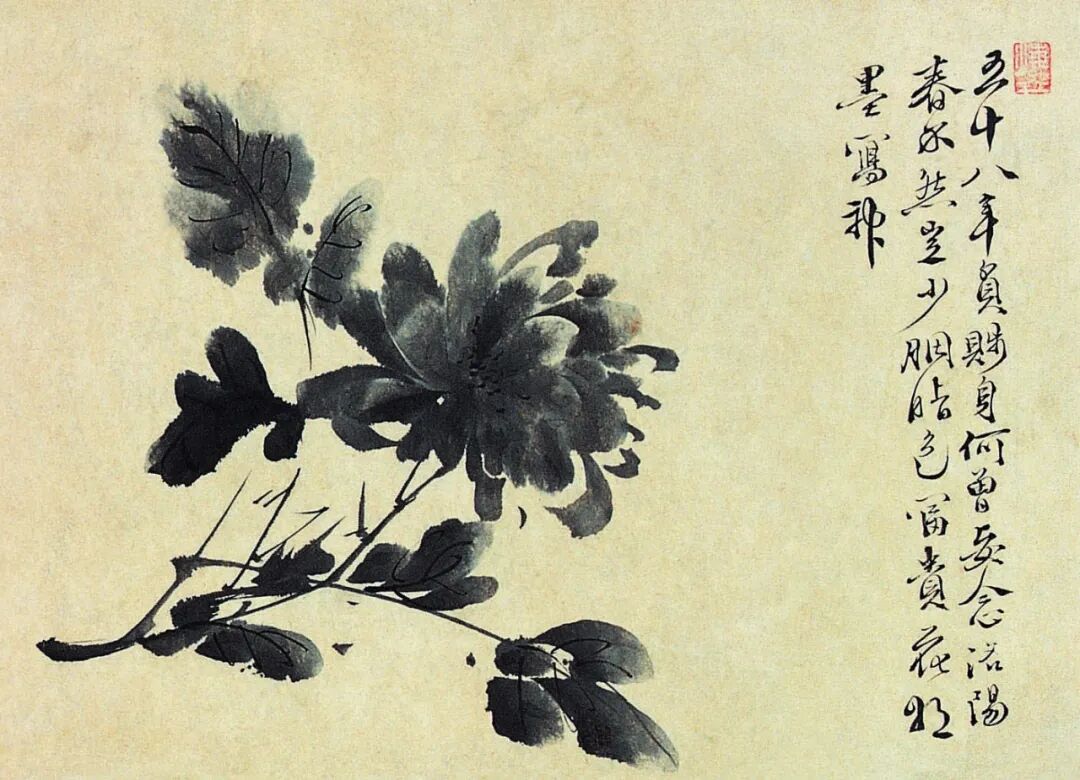
Assorted Flowers (Detail), Xu Wei, 1592, 30cm×401cm, ink on paper, Collection of Rongbaozhai
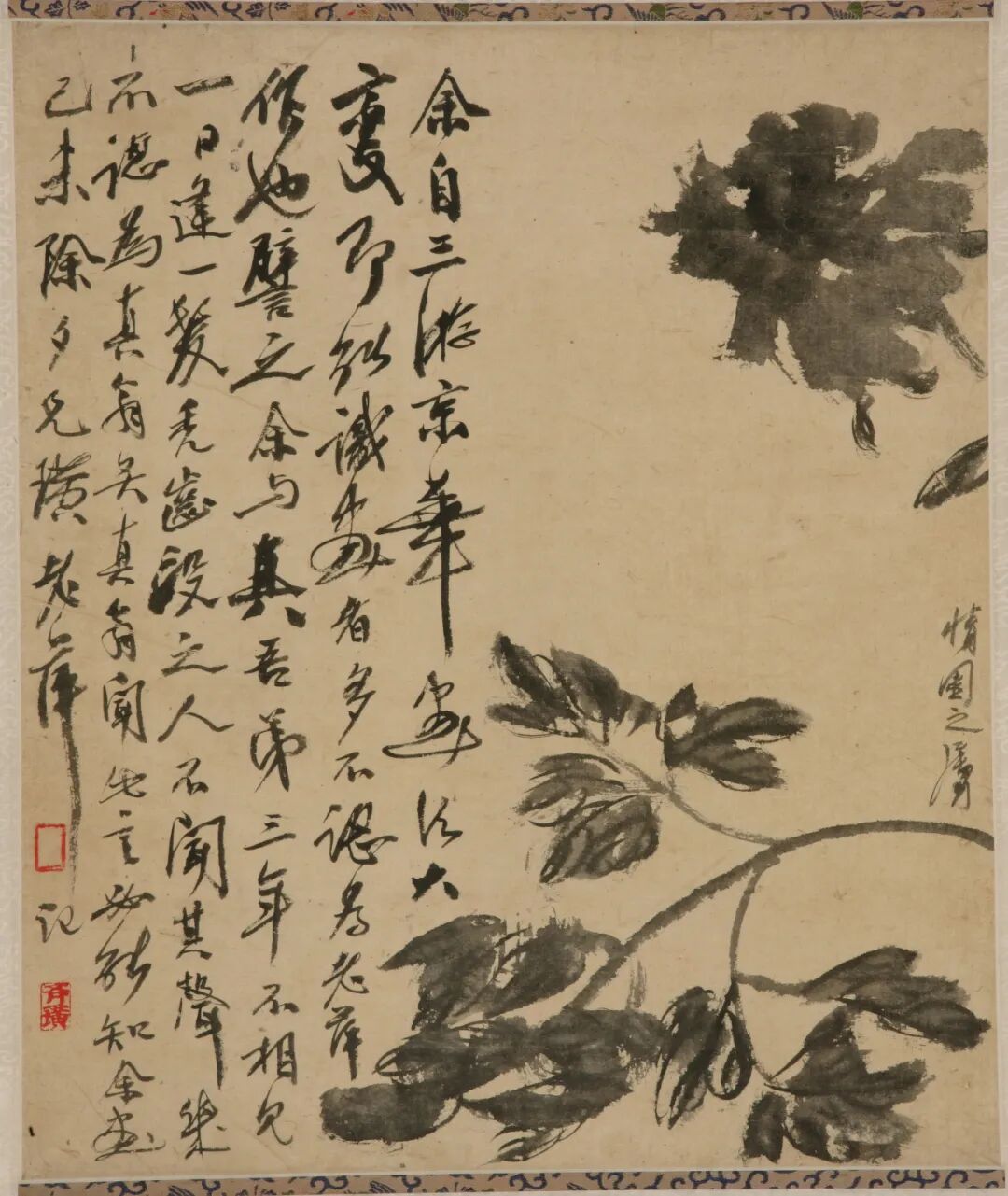
Ink Peony, Qi Baishi, 1955, 51cm×43.5cm, Ink on paper, Collection of the National Art Museum of China

Painting of Two Magpies on a Large Rock, Bada Shanren, 1690, 159cm×49cm, Ink on paper, Collection of the Bada Shanren Memorial Museum

Two Birds on a Rock, Qi Baishi, no date, 156.5cm×41.5cm, ink and color on paper, collection of Beijing Painting Academy
A collection of rare works, including Qi Baishi's imitations of his predecessors
The curatorial team of this exhibition has been meticulously preparing for more than two years, collecting nearly 100 fine works from many museums and art galleries at home and abroad. Many of these works are being exhibited simultaneously for the first time, creating a rare artistic dialogue.
According to the Beijing Painting Academy, to vividly showcase Qi Baishi's artistic roots, the exhibition features representative works such as Xu Wei's "Assorted Flowers" and "Bamboo, Rocks, and Narcissus," Bada Shanren's "Two Magpies and a Large Rock" and "Deer and a Toon Tree," Wu Changshuo's "Deer from Bada Shanren" and "Colored Plum Blossoms," Qi Baishi's "Ink Peony," "Red Plum," and "Two Birds on a Rock," as well as precious drafts of Qi Baishi's imitations of Bada Shanren. From the brushwork and composition to the imbued life force within his paintings, the influence of these three masters permeated Baishi's brushstrokes, contributing to his extraordinary and dynamic style. By juxtaposing works of similar subject matter but distinct styles, viewers can hear the four artists' interplay of brush and ink, experiencing the unending cycle of artistic creation and spiritual resonance that has endured through generations.
Exhibits include Xu Wei's "Various Flowers" and "Bamboo, Rocks and Narcissus", Bada Shanren's "Two Magpies and a Large Rock" and "Deer and Toon", Wu Changshuo's "Colored Grapes" and "Bamboo and Palms", Qi Baishi's "Ink Peony" and "Lychee" and other representative works.
Among them, Xu Wei's "Miscellaneous Flowers" (collected by Rongbaozhai) was created in 1592, with a total length of 401 cm. Its wild ink-splashing style pioneered the freehand painting style.
Bada Shanren's "Two Magpies on a Large Rock" created in 1690 (in the collection of the Bada Shanren Memorial Hall) embodies his characteristics of using less to show more and having an interesting composition.
Wu Changshuo's 1915 painting "Colored Grapes" (in the collection of the Xiling Seal Society) showcases his unique style, imbued with the essence of bronze and stone carving. Qi Baishi's 1945 painting "Lychees" (in the collection of the Beijing Painting Academy) embodies his artistic philosophy of "the beauty lies in the balance between similarity and dissimilarity."

Grapes, Wu Changshuo, 1915, 140cm×69cm, ink and color on paper, from the collection of Xiling Seal Society

Squirrel with Grapes, Qi Baishi, no date, 88.5cm×29cm, ink and color on paper, collection of Beijing Painting Academy
The exhibition also displays many works by Qi Baishi imitating the works of three predecessors, clearly showing how Qi Baishi evolved from resemblance in form to resemblance in spirit, and then to integrating and mastering them and forming his own style.
The Beijing Painting Academy stated that this exhibition is not only a display of art treasures but also an academic discussion on the inheritance and innovation of Chinese art. To vividly showcase Qi Baishi's lineage, the exhibition has added an interactive installation titled "Qi Baishi's Lineage and the Rebirth of Brush and Ink." Visitors can closely examine Baishi's original manuscripts, appreciate his comments on his predecessors, and touch and flip through a genealogical chart to explore his artistic roots, directly experiencing the influence and resonance between renowned artists. "Red Flowers and Ink Leaves" is not only a technical innovation but also reflects Qi Baishi's profound concern for the ordinary and a passionate tribute to the true nature of life.

Burnt Stone Hibiscus, Bada Shanren, undated, 178cm×45cm, ink on paper, from the collection of the Bada Shanren Memorial Museum

Painting of Snow, Banana, Plum and Rock, Xu Wei, Ming Dynasty, 134cm×30cm, ink on paper, collection of Shenyang Palace Museum
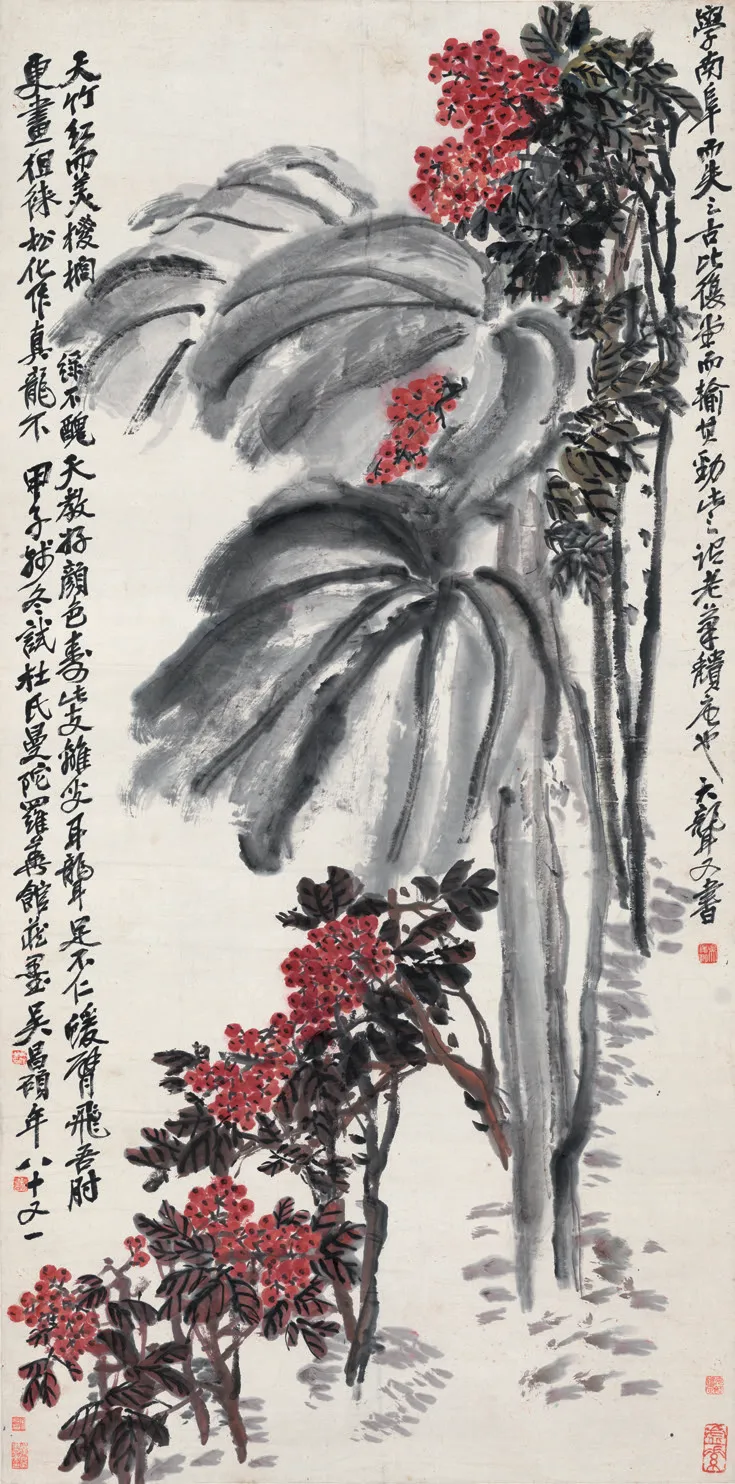
Bamboo and Palm, Wu Changshuo, 1919, 138cm×68.5cm, ink and color on paper, Collection of Xiling Seal Society
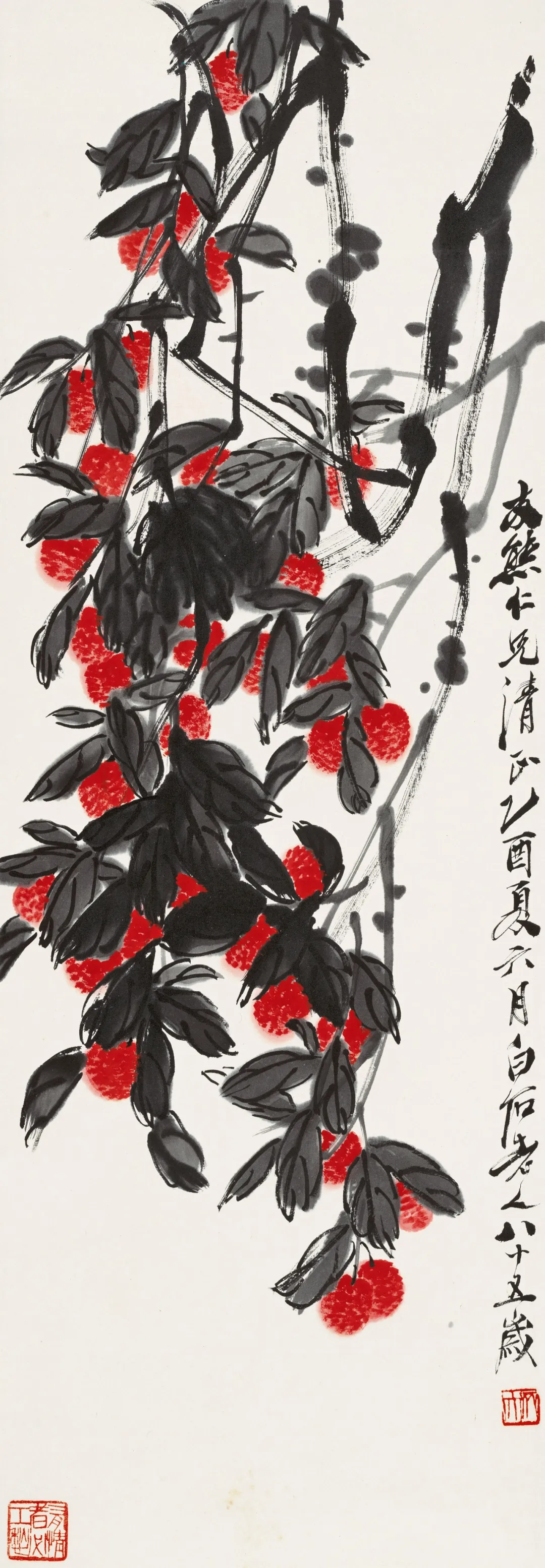
Lychee, Qi Baishi, 1945, 96.5cm×33.5cm, color on paper, collection of Beijing Painting Academy
It is reported that during the exhibition, the Beijing Academy of Painting will also hold a series of academic lectures and public education activities, inviting domestic and foreign experts and scholars to conduct in-depth discussions on the inheritance and innovation of Chinese freehand painting. The exhibition will last until December 9, 2025.
(Some of the information in this article is from the Beijing Academy of Painting)


